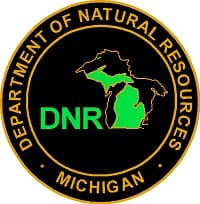Iron Industry Museum Gearing Up for June 16 Antique Auto Show in Michigan

The Michigan Iron Industry Museum in Negaunee Township is revving up for its 24th Annual Antique Automobile Exhibit from noon to 4 p.m. Sunday, June 16, on the museum grounds.
Celebrating a vital link between Michigan’s iron, steel and automotive industries that has lasted more than 110 years, “Iron, Steel and the Automobile” will feature more than 50 automobiles, light trucks and motorcycles (dating from 1900 to 1969) owned by residents of the central Upper Peninsula and from as far away as Rochester, Minn.
All exhibited vehicles must be in original or restored-to-original condition. Pre-registration is required and may be arranged by contacting the museum.
“Featuring vehicles from six decades, traditional jazz, Golden Oldies, summertime food and refreshments, the event promises a ‘Pure Michigan’ experience of family fun for kids of all ages,” said Troy Henderson, a historian for the Michigan Historical Center.
Exhibit vehicles are set to include the 1900 American Metropolitan horse-drawn, steam-powered fire pump from the Michigamme Historical Society; a 1914 Model T delivery truck owned by Dick and Nancy Lutey; a 1923 Hudson Touring Sedan shown by Jorma and Kathleen Lankinen of Marquette; a 1925 Ford Model T Doctor’s Coupe displayed by Larry and Tammy Bicigo of Crystal Falls; a 1931 Ford Roadster owned by David Vandenburg of Gwinn; and a 1959 GM Cadillac 62 Deville convertible shown by Ron and Marlene Nier of Marquette.
Museum visitors will also see Model As, Model Ts, touring cars, pick-up trucks, the 1937 Marquette Township and 1930 Breiting Township fire trucks and a 9.2-horsepower 1958 King Midget shown by Don Balmer of Marquette. Other featured vehicles include Greg and Joanne Linstrom’s 1958 BMW Isetta “Bubble Car,” Dennis Sobczak’s 1964 Buick Riviera, and a 1965 American Motors Ambassador Rambler 990 convertible shown by Raymond Pellisier.
Throughout the afternoon visitors will enjoy traditional jazz and popular music of the Swing Era by the Bluffs Orchestra, as well as music that stirred the youth of the 1950s and early 1960s provided by Thunder and Lighting Production of Marquette. The popular Next Generation Barbershop Quartet will also be touring the museum grounds during the event.
Other attractions at this Father’s Day event include a food concession offered by Teaching Family Homes, specializing in hot dogs, bratwurst, hamburgers and more. For lighter fare, museum guests can purchase ice cream, popsicles and popcorn. At 1:30, the museum will show the new PBS documentary “Henry Ford” in the auditorium. There is no charge for the showing, and visitors can watch part or all of the program.
Public admission to the car show is $3 per vehicle to help defray the cost of the event. Museum admission is free. The event is sponsored by the Michigan Iron Industry Museum Advisory Board.
Converted to steel and sold to automakers, Michigan iron ore helped put America on wheels. “Once a symbol of wealth at the start of the 20th century, the automobile soon became a middle-class necessity that changed American mobility, housing patterns, work and leisure,” said Henderson. “The dynamic combination of iron, steel and the automobile revolutionized American society, changing our lives forever.”
The centerpiece of the event is a 1929 Ford Model A Sport Coupe, donated by the late John Maitland and now a permanent addition to the museum’s exhibits. After a production run of 19 years, the Ford Motor Company replaced its reliable but plain Model T, affectionately called “Tin Lizzie,” with the Model A. Introduced in 1927, the “new Ford” brought style, integrity and performance to American roads and, as popular song lyrics noted, made “a lady out of Lizzie.” Sporting a four-cylinder engine, the Model A could reach a top speed of 65 mph. In 1929, it cost less than $600 or about $6,800 today.
In the 1920s, the Detroit automaker’s decision to acquire iron mines, timber reserves and a fleet of freighters to supply its new industrial plant at Dearborn increased employment and economic stability in the Upper Peninsula.
Henderson added that Northern Michigan resources fueled production at the River Rouge plant, where Ford workers turned iron into engine blocks, converted steel into springs, axles and car bodies, and assembled automobiles using hardwood milled in the U. P.
Ford’s experiment in iron mining produced just a fraction of company needs, Henderson noted, yielding higher costs than income. The company shut down its mines in the 1930s during the Great Depression, reopening them briefly during World War II.
The Michigan Iron Industry Museum is one of 11 nationally accredited museums administered by the Michigan Historical Center, a public, non-profit facility of the Department of Natural Resources. It is located at 73 Forge Road, overlooking the site of the Carp River Forge, a pioneer industrial site listed on the National Register of Historic Places. The museum is open daily from 9:30 a.m. to 4:30 p.m. through Oct. 31. For more information about the auto exhibit or upcoming events, call 906-475-7857 or visit www.michigan.gov/ironindustrymuseum.

